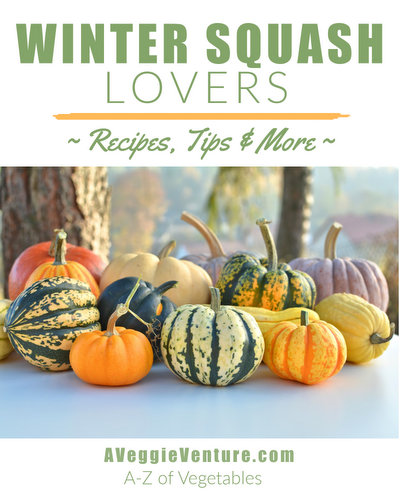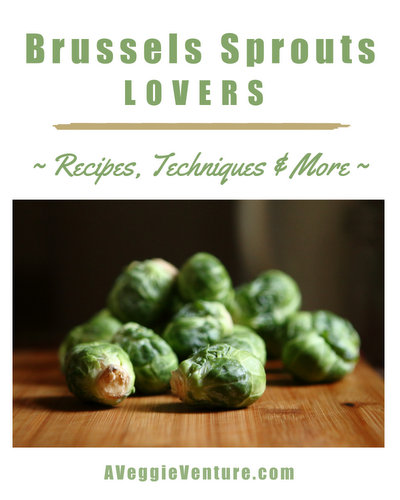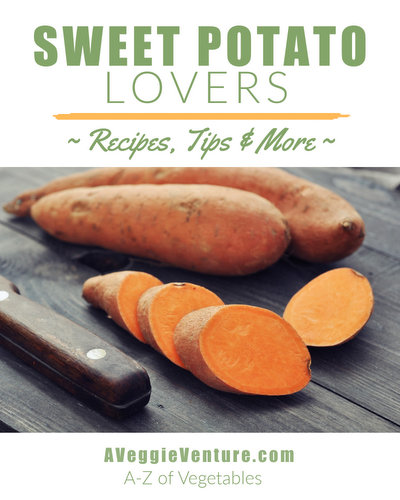Perfect Stovetop Brown Rice ♥
Real Food, Fresh & Practical. Year-Round Healthy Food Staple. Budget Friendly. Great for Meal Prep. Low Fat. Weight Watchers Friendly, Especially in the Purple Plan. Not just vegan, Vegan Done Real. Naturally Gluten Free.
Let's Be Honest. Brown Rice Can Be ... Unappealing
Who's noticed? If you follow the directions on a bag or box of brown rice, the rice turns out tough and gummy and unappetizing. It's no wonder that people turn to rice cookers for help! It's no wonder that people douse brown rice with butter! It's no wonder, so many of us choose the less healthful but delicious white rice. (Here's How to Cook White Rice, also on the stovetop.)For good brown rice, there are two choices. We can do better!
Choice #1: The Oven
For winter, definitely try one of A Veggie Venture's reader favorites, the oh-so-popular Oven-Baked Brown Rice that's just oh-so-perfect, yielding almost-nutty bites of moist, flavorful rice. Frankly, it's my favorite way to cook brown rice.Choice #2: The Stove
But here it is, summer. Turning on the oven for an hour while the air conditioning runs seems to defeat the purpose. So I was intrigued to see Saveuer's new technique for cooking rice on the stovetop. It's dead simple and takes only an hour to get to the table, 15 minutes faster than the Oven-Baked Brown Rice, that's not a lot but still. This technique yields moist, nutty cooked brown rice. And the rice stays moist! So I don't hesitate to make a batch in the morning, then reheat for supper.Four Tricks to Perfect Stovetop Brown Rice
Is Brown Rice a Free Food for Weight Watchers? YES and NO.
To encourage us to make healthy food choices, Weight Watchers designates hundreds of food as "free" – no points to count! Brown rice is indeed a free food, but only for those follow the myWW purple plan. If you follow any other plan, sorry, brown rice is not a zero-point food choice.Want to know more? Here's my simplified Weight Watchers Zero Point Food Lists, detailed for the myWW rainbow of green, blue and purple plans.
PERFECT STOVETOP BROWN RICE
Hands-on time: 5 minutes
Time to table: 45 minutes (see ALANNA's TIPS)
Makes 4 cups cooked rice
Time to table: 45 minutes (see ALANNA's TIPS)
Makes 4 cups cooked rice
7 cups water
1 cup (200g) brown rice, rinsed well
1 tablespoon butter (use vegan butter or oil for vegan)
Kosher salt to taste
Bring the water to boil in a large << covered >> pot (see TIPS).
Rinse the rice under cold running water until the water runs clear. Start by putting the rice in a strainer or colander and rinsing under the faucet. Then, to help gauge the clarity of the water, find a bowl that's big enough to hold the strainer or colander. Fill it with water, lower the strainer/colander into the water and swoosh around. If the water stays clear, good, you're done. If not, keep rinsing until the water stays clear. You just might be shocked by the amount of starch gunk that washes off the rice!
Add the rice and butter to the boiling water, stir once to distribute, then cook << uncovered >> for 30 minutes, stirring every so often so rice doesn't stick to the bottom and adjusting the heat as needed to maintain a fast simmer. Test for doneness.
If needed, drain the rice through the same strainer/colander, then return the drained rice to the hot pot. Season with salt to taste but do be generous. Off heat, fluff the rice with a fork, cover the pot and let the rice rest for 10 minutes then fluff again. Serve and savor!
ALANNA's TIPS & KITCHEN NOTES
Still Hungry?
NEVER MISS A RECIPE!
For "home delivery" of new recipes from A Veggie Venture, sign up here.Once you do, new recipes will be automatically delivered straight to your e-mail In Box.
More Favorite Rice Recipes
~ Greek Rice Salad with Artichokes & Feta ~~ Cajun Dirty Rice with Eggplant ~
~ Finnish Carrot-Rice Casserole ~
~ more rice recipes ~
from A Veggie Venture
~ How to Cook White Rice ~
~ Red Beans & Rice ~
~ Black Beans & Rice Skillet Casserole with Smoked Chicken ~
~ Afghan Chicken & Rice Casserole (Kabeli Palau) ~
~ more rice recipes ~
from Kitchen Parade
Seasonal Eating: Late Summer Across the Years
Broiled Tomatoes with OreganoLooking for healthy new ways to cook vegetables? A Veggie Venture is home to hundreds of super-organized quick, easy and healthful vegetable recipes and the famous asparagus-to-zucchini Alphabet of Vegetables. Join "veggie evangelist" Alanna Kellogg to explore the exciting world of common and not-so-common vegetables, seasonal to staples, savory to sweet, salads to sides, soups to supper, simple to special.
© Copyright Kitchen Parade
2009 & 2020
© Copyright Kitchen Parade
2009 & 2020







I have tried the oven baked rice with much success. It really takes the mystery out of cooking rice.
ReplyDeleteI have seen this method before, where you boil rice like you would pasta. I think it makes perfect sense, and you don't have to remember any silly rice/water ratios.
I didn't really get "a watched pot never boils" until Rachel Ray explained it on one episode. She said something like, "A watched pot never boils, so put a lid on it!".
I thought it meant that waiting for something makes it seem longer, so I would leave the kitchen! Oh well, lesson learned. The lid helps a lot.
I love this method, too!! Since I started cooking brown rice this way, I've been wondering how much of the nutrients are lost in the cooking water. I can't find an answer, but I'm sure it's still better than eating white rice.
ReplyDeleteI made brown rice veggie wraps last night, and it was gummy. I'm going to try this! Thanks so much.
ReplyDeleteAre you sure that it is 12 cups of water?
ReplyDeleteAre you sure it is 12 (twelve) cups of water?
ReplyDeleteI rinse my rice and toast it in a dry skillet until it pops a little, like popcorn. I use 1 3/4 cups water to 1 cup of brown rice, and cook it about 30 minutes, or until the bubbling water sound is no longer present, then turn the heat off and leave covered for 5 or 10 minutes. It turns out perfectly cooked, dry and fluffy.
ReplyDeleteI personally don't like the idea of draining rice, as I don't want to lose any nutrients.
I'm so glad you posted this! Let me tell you about my black rice, though. I was using a mix of brown, red, and brown japonica - I had beautiful multicolored rice. I added a little black ("Forbidden") rice to the mix, and now it all comes out black. All of it. Tastes just fine, but is really not too good-looking.
ReplyDeleteI like the idea of cooking rice like pasta, but 12 cups of water for 1 cup rice? That seems pretty wasteful to me, compared to the usual methods that only require 2.5 cups of water.
ReplyDeletei used to cook rice this way because i was lazy and didn't want to measure water/remember ratios. I bought a japanese sticky brown rice (haiga) that only takes 15 mins on the heat. rinse, soak in water for 15 mins, 15mins on heat, and it's done. i like this for summer, takes less heat to cook. katie, you could always save/freeze your extra rice water to use to thicken pasta sauce, add to soup stocks, that way eventually you eat the nutrients leached out in the water.
ReplyDeleteNO WAY! This looks too easy! I am SO looking forward to trying this stove-top method since I tend to give up my oven-cooked rice during the summer (and that means no Hurricane Rice - say it ain't so!!!). You are my hero!! ♥
ReplyDeleteI've been using the "pasta method" to cook brown rice for awhile now. Works great!
ReplyDeleteSimple recipes, and foods, are often the best. Thanks for posting!
ReplyDeleteWill try this today - thanks!
ReplyDeleteI hate to be a nit-picker, but it's Lundberg (not Lindberg as it's spelled in your post) and yes, they have some great products.
I will definitely try the oven baked rice this winter. My daughter LOVES brown rice!
ReplyDeleteI have had bad experiences cooking brown rice and quinoa using the ratios and standard directions. I followed a recommendation posted my Lorna Sass to boil quinoa in ample water and drain and it works EVERY time. After reading this, I am going to do it with brown rice too! I get too inconsistent of results following the standard directions.
ReplyDeleteHello All ~ Just back from two weeks of vacation, thanks for all the comments while I was away!
ReplyDeleteMr Salad Dressing ~ That's a great explanation, thanks! Yes, a lid, a lid!
Katie ~ Yes, that whole cooking water question. I don't have a definitive answer.
Diane ~ No more gummy brown rice!
Jenny ~ Yes, 12 cups seems like a lot but it's what helps fluff up the rice.
DebHix ~ Hmm, I like the toasting idea. Maybe it's the last step that helps the fluffiness.
Cyndi ~ Good tip!
LizC ~ Agreed, I just know it works.
Jenna ~ 15 minutes is a real treat!
Tracy ~ Oh good! And I'm so glad to hear that you love the Hurricane Rice, it's been too long since I've made it!
Joe ~ A good name for this technique for cooking brown rice!
John ~ Thanks!
RWCFoodie ~ Thanks for the spelling correction, I appreciate it!
Lyn ~ Yes, the oven-baked rice is a complete winner.
Amy ~ Ah, yes, I've had trouble with quinoa too. I think it's odd that the producers don't want to make their products fool-proof!
I just found this blog, so I know this comment is a little late. This method of cooking brown rice is what I swear by, but I have to say it can be done with 4 cups of water to the 1 cup of rice. Much less wasteful! If I double the rice, though, I notice I need more water than the third of what's called for. Honestly, I just check it every so often to make sure the water level is still above the rice. Hope that helps! :)
ReplyDeleteThis comment has been removed by a blog administrator.
ReplyDeleteThis comment has been removed by a blog administrator.
ReplyDelete